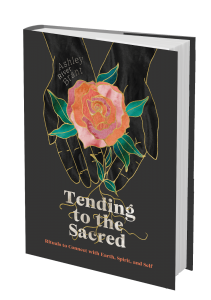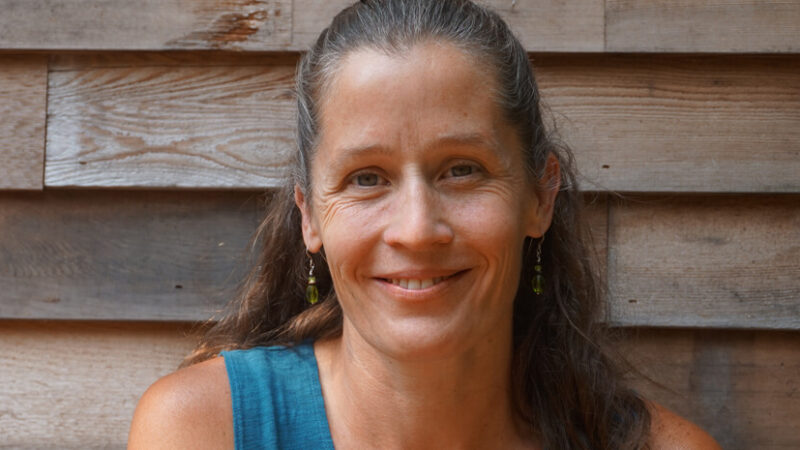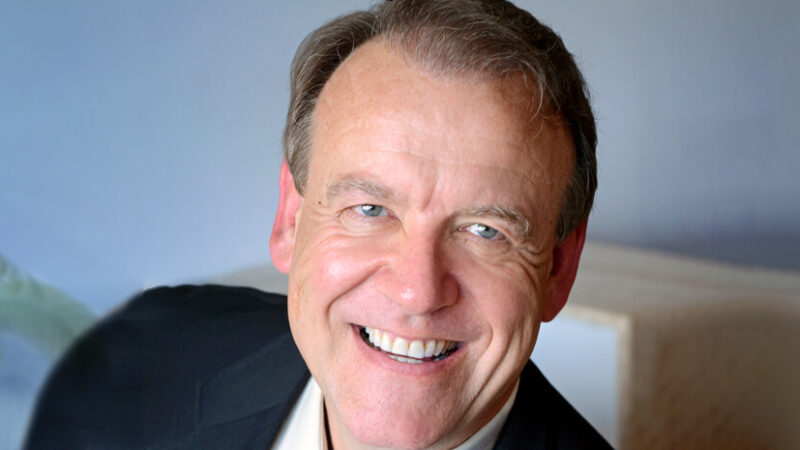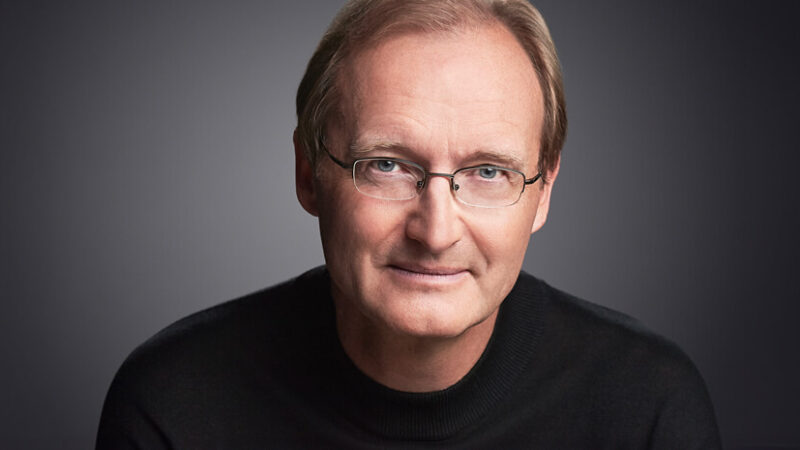-
E117: The Real Work: Letting Go from Within
Michael Singer — October 2, 2025
True spirituality isn’t about mystical experiences or lofty ideals—it’s about honestly facing...
-
Once More: Reflections on Reincarnation and the Gap Between Lives
Tami Simon — September 26, 2025
In this special reflection episode of Insights at the Edge host Tami Simon looks back on her...
-
Honey Tasting Meditation: Build Your Relationship with Sweetness
There is a saying that goes “hurt people hurt people.” I believe this to be true. We have been...
Written by:
Amy Burtaine, Michelle Cassandra Johnson
-
Many Voices, One Journey
The Sounds True Blog
Insights, reflections, and practices from Sounds True teachers, authors, staff, and more. Have a look—to find some inspiration and wisdom for uplifting your day.
Standing Together, and Stepping Up
Written By:
Tami Simon -
The Michael Singer Podcast
Your Highest Intention: Self-Realization
Michael Singer discusses intention—"perhaps the deepest thing we can talk about"—and the path to self-realization.
This Week:
E116: Doing the Best You Can: The Path to Liberation -
Many Voices, One Journey
The Sounds True Blog
Insights, reflections, and practices from Sounds True teachers, authors, staff, and more. Have a look—to find some inspiration and wisdom for uplifting your day.
Take Your Inner Child on Playdates
Written By:
Megan Sherer
600 Podcasts and Counting...
Subscribe to Insights at the Edge to hear all of Tami's interviews (transcripts available, too!), featuring Eckhart Tolle, Caroline Myss, Tara Brach, Jack Kornfield, Adyashanti, and many more.
Most Recent
Melissa Brown: Nourishing Your Nervous System
When was the last time you felt truly relaxed, present, and at peace with everything going on in your life and in our world? In this podcast, Tami Simon speaks with Melissa Brown about her new audio learning program, Nourishing Your Nervous System, and how we can begin to empower ourselves to choose the state of regulation over dysregulation. Give a listen to this practical and inspiring discussion of the ventral vagal branch of the parasympathetic nervous system—and how we can access it for calm, joy, and vitality; co-regulation with others as a means to move out of dorsal depression; productive thinking versus rumination and other forms of unhealthy thinking; the elongated breath as a tool for shifting out of sympathetic arousal (or the “fight, flight, freeze” response); improving your “vagal tone”; doom-scrolling, binge-watching, and other ways we distract ourselves from what we don’t want to feel—and how we can learn to hold a state of vitality and a state of tension at the same time; the psoas muscles and their connection to nervous system activation; the benefits of “constructive rest pose”; “fixed action patterns” and how the psoas muscles store trauma; attuning to your heart; and more.
Mary Firestone: Trusting the Dawn: Choosing Freedom an...
In 2018, Mary Firestone survived the tragic Montecito mudslide caused by 200 million gallons of rainfall in 15 minutes, washing away her home and more than a hundred others. In the wake of this experience, Mary began a healing journey that led to the creation of her new book, Trusting the Dawn: Choosing Freedom and Joy After Trauma. In this podcast, Sounds True’s founder, Tami Simon, speaks with Mary about her personal story and the lessons she offers in the book, including how we share the narratives of our past traumas; the difference between being victimized and remaining in victimhood; reframing our experiences versus spiritual bypassing; the importance of integration for the healing of trauma; MDMA, ketamine, and holotropic breathwork therapies; the “personal I” and the “depersonalized I”; initiation experiences; overcoming fear around speaking your truth; hypnosis and past-life regression as a pathway to wholeness; meditation, EMDR, flower essences, and other widely accessible alternative healing modalities; the power of choice; and more.
The Surprising Power of EFT (Emotional Freedom Techniq...
In this podcast, Tami Simon speaks with Dr. Dawson Church about Emotional Freedom Techniques (EFT) and the technique known as “tapping”—and its amazing efficacy in trauma healing and post-traumatic growth. Tune in to this hope-giving, possibility-expanding conversation that explores bringing energy therapies into mainstream primary care, the proven effects of tapping acupuncture meridians to calm limbic activity, the history of tapping and the steps involved in practice, the importance of self-acceptance, avoiding retraumatization through memory reconsolidation and emotional extinction, the impacts that tapping has on our brain waves and sleep patterns, resilience and post-traumatic growth, meditation practice and the experience of “bliss brain,” the power of compassion, and much more.
Customer Favorites
Tips and Tools to Heal Our Relationship with Mother Ea...
Reciprocity
Tending to the natural world is essential. We can no longer ignore or expect the Earth to just be there giving us all that we need, shutting out her cries. Her resources are limited. She is our mother, and she is burning, melting, and roaring in a call for help for us to tend to her needs. Animals are becoming extinct and others are abused and mistreated for profit, as are our trees—our sacred lungs here on Earth. We are meant to connect to the natural world as if it were a friend, a sister or brother, mother or father. We are all a part of the same Earth family. The trees need the air we exhale, yet we forget that we rely on them to breathe, as well. We forget, so easily, just how important this relationship is for our mere existence. Our connection is such a simple act, but we’ve completely lost our intimacy with the natural world as a collective and it’s begging for us to return to this harmonious kinship.
The Earth is our mirror—the truest reflection for our collective. Its self-destruction and decay shows us the separation we’ve created with it, with ourselves, with all that is Sacred, and with each other. When she burns, it mirrors the repressed anger we are holding from not meeting the needs of our Spirit, for not listening to truth. Her polluted oceans reflect the pollution of our inner waters—our disrespect and dishonoring of the emotions and intuitive wisdom of the feminine. The remedy is actually quite simple: conscious communication, love, and connection can help restore this balance. Once we each form a relationship with our elemental allies, our awareness will shift to honoring and protecting, and change the way we relate to the natural world as a whole, just like a connection with any growing relationship. Our future depends on how we tend to the Earth today.

Working with the Land
When working with the natural world in our healing, we also must cultivate a relationship with the land that supports us where we live. We thrive when we are connected to and work with the land that holds us. Simple ways to do this include:
- Spend time with the land. Listen to it. Get to know its natural features, its seasonal blossoms and cycles.
- Research and recognize its indigenous origins. Who lovingly tended to the land before you? How can you honor these people? Are they still active in your community? How can you support them?
- Join a local land conservation group.
- Try to source fresh herbs in your community or in the wild, instead of bought in plastic imported to your grocery store. Look for community gardens, farmers markets, CSAs, or even plant them yourself! For dried herbs and plants not native to your bioregion, check out your local apothecary to support small Earth-conscious businesses. Always ask where they get their herbs and if they are sustainably harvested or organic.
- Plant walks are also a great resource for learning how to spot medicine in the wild so you can forage yourself, and they can also teach you more about what grows near you. Find a local herbalist who you resonate with and support them.
Ways to Further Reciprocate:
- Talk to the trees like a friend. Ask them for guidance and support and listen with care and respect.
- Plant trees and flowers. Reforest and replant. Revive our dying plant species.
- Stop utilizing single use plastic, especially if you have a company that sells products. Our oceans are drowning in plastic and our sea creatures are suffering. We
are disrupting balance because of our addiction to consumerism. Plastic does not disappear and most of it doesn’t get recycled. You can nowadays find a plastic-free alternative for almost anything you could ever need with a little bit of conscious attention. Do your research and be mindful of your plastic consumption. Choose consciousness over convenience, the larger vision over a quick fix. - With everything you take from the Earth or that is made of the Earth, say a simple thank you before using or consuming it.
- Say intentional prayers and blessings for the Earth and her healing.
- Withdraw your support from companies and groups that are not in support of the Earth’s health and sacredness— companies that use unsustainably harvested resources or unnecessary plastic, those that engage in unethical farming, and fast fashion.
- Share with friends and family how to be more eco-conscious. Does your mom recycle? Is your brother still using plastic straws? Does your best friend need an iced coffee served in a plastic cup every day or can they bring their own cup to the coffee shop? Gently offer suggestions to support the Earth whenever you see fit.
- Support companies that focus on Earth connection and protection. We vote with our dollars and money is energy. Give your energy to those supporting the Earth.
This is an excerpt from Tending to the Sacred: Rituals to Connect with Earth, Spirit, and Self by Ashley River Brant.
 Ashley River Brant is a multidimensional artist and feminine healer bringing her medicine through as the creator of Soul Tattoo®, a ceremonial intuitive tattooing modality, as well as with film photography, illustration, writing, as the host of Weaving Your Web podcast, and through her online courses. Ashley uses her gifts of mediumship and connections to the loving spirits of the natural world to offer a feminine voice of healing expression for collective transformation in all her work. Ashley’s focus is to assist her clients, and all who are drawn to her work, in awakening to a new wave of feminine power, attuned to the mystery, honoring the creative and intuitive power within us all, and embodying it with grounded presence and purpose, so that we may all heal, open our hearts to the sacred, and align with our authentic expression and soul’s true essence. Ashley will be releasing her first book and first oracle deck with Sounds True in 2021.
Ashley River Brant is a multidimensional artist and feminine healer bringing her medicine through as the creator of Soul Tattoo®, a ceremonial intuitive tattooing modality, as well as with film photography, illustration, writing, as the host of Weaving Your Web podcast, and through her online courses. Ashley uses her gifts of mediumship and connections to the loving spirits of the natural world to offer a feminine voice of healing expression for collective transformation in all her work. Ashley’s focus is to assist her clients, and all who are drawn to her work, in awakening to a new wave of feminine power, attuned to the mystery, honoring the creative and intuitive power within us all, and embodying it with grounded presence and purpose, so that we may all heal, open our hearts to the sacred, and align with our authentic expression and soul’s true essence. Ashley will be releasing her first book and first oracle deck with Sounds True in 2021.

Learn More
Sounds True | Amazon | Barnes & Noble | Indiebound | Bookshop
Mindfulness for Beginners with Jon Kabat-Zinn
An Invitation to the Practice of Mindfulness
Enjoy this sample recording from the acclaimed and inspiring new book and CD by Jon Kabat-Zinn entitled Mindfulness for Beginners. We may long for wholeness, suggests Jon, but the truth is that it is already here and already ours. The practice of mindfulness holds the possibility of not just a fleeting sense of contentment, but a true embracing of a deeper unity that envelops and permeates our lives. With Mindfulness for Beginners you are invited to learn how to transform your relationship to the way you think, feel, love, work, and play—and thereby awaken to and embody more completely who you really are.
Here, the teacher, scientist, and clinician who first demonstrated the benefits of mindfulness within mainstream Western medicine offers a book that you can use in three unique ways: as a collection of reflections and practices to be opened and explored at random; as an illuminating and engaging start-to-finish read; or as an unfolding “lesson-a-day” primer on mindfulness practice.
Andrew Holecek: Reverse Meditation
Your mindfulness practice worked! You calmed your mind and felt the deep, inner bliss that meditation brings. But, asks Andrew Holecek, what do you do with these beatific states when your world is falling apart? Where’s your meditation practice then?
In this podcast, Tami Simon speaks with Holecek about his new book, Reverse Meditation, and how we can move toward a more complete spirituality that welcomes all of our experience. Illuminating the four steps of reverse meditation and much more, their conversation explores: how pain and hardship can accelerate the spiritual journey; why mindfulness “sedates but doesn’t liberate”; the cultivation of “industrial-strength” meditation; repairing an adverse relationship to unwanted experiences; the practice of open awareness; bringing the unconscious into the light of consciousness; investigating our personal “super-contractors” such as anger, fear, or anxiety; shifting from reactivity to responsiveness; the OBEY acronym of reverse meditation: observe, be, examine, yoke; three attitudes for practice: kindness, patience, and curiosity; establishing the right view; the anti-complaint meditation; and productive thinking.
Note: This episode originally aired on Sounds True One, where these special episodes of Insights at the Edge are available to watch live on video and with exclusive access to Q&As with our guests. Learn more at join.soundstrue.com.






